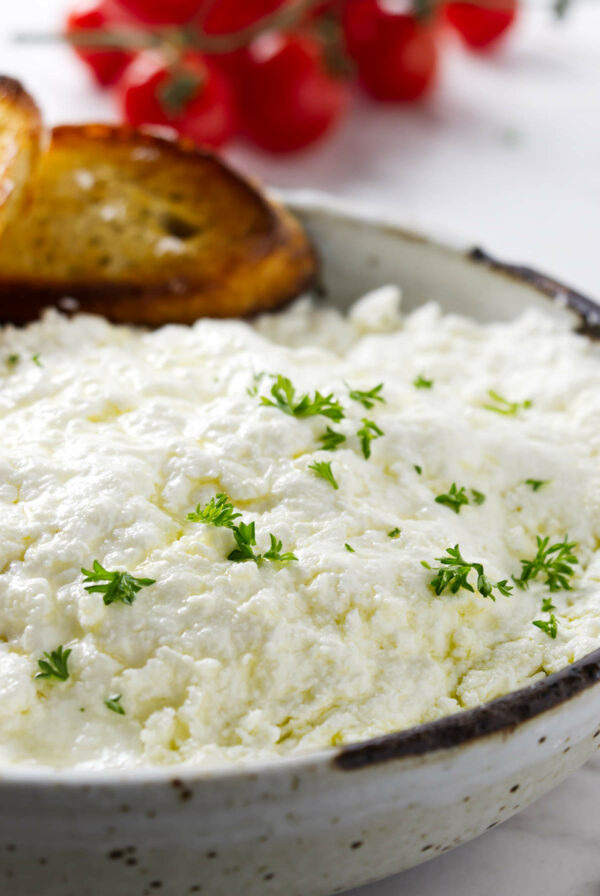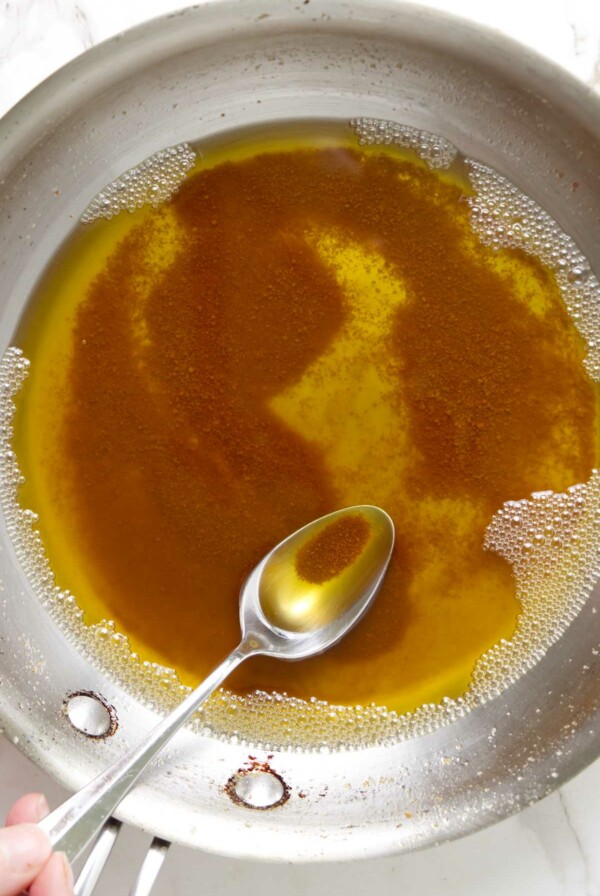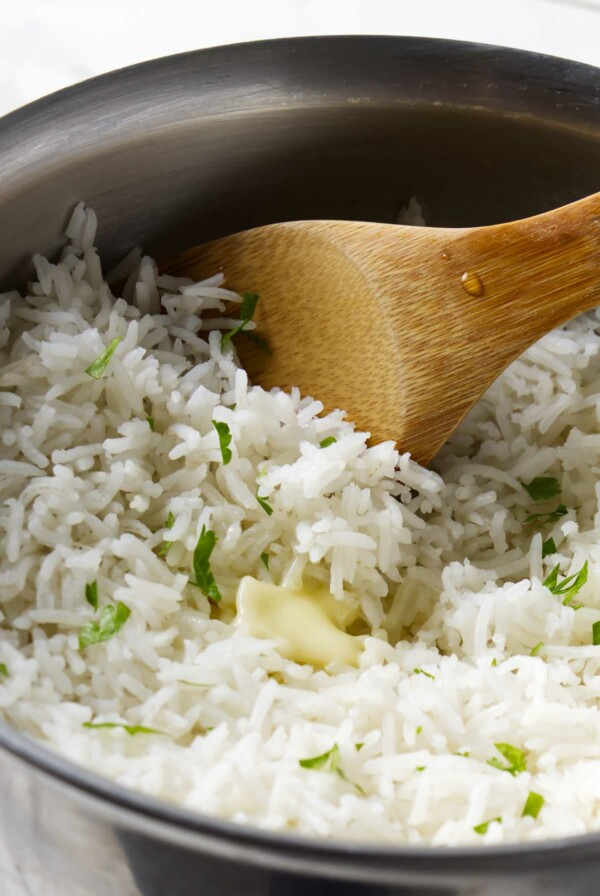This post may contain affiliate links. Please read our disclosure policy. As an Amazon Associate, I earn from qualifying purchases.
A meat thermometer is one of the most useful kitchen tools you can own. It takes the guesswork out of cooking and helps you avoid serving meat that’s undercooked, overcooked, or just not quite right.
Whether you’re roasting a chicken or grilling burgers, a meat thermometer helps you get it right the first time. No slicing to peek, no guessing. Just a quick check for perfectly cooked results.
Here’s how to use a meat thermometer properly so your meals come out the way you intended.
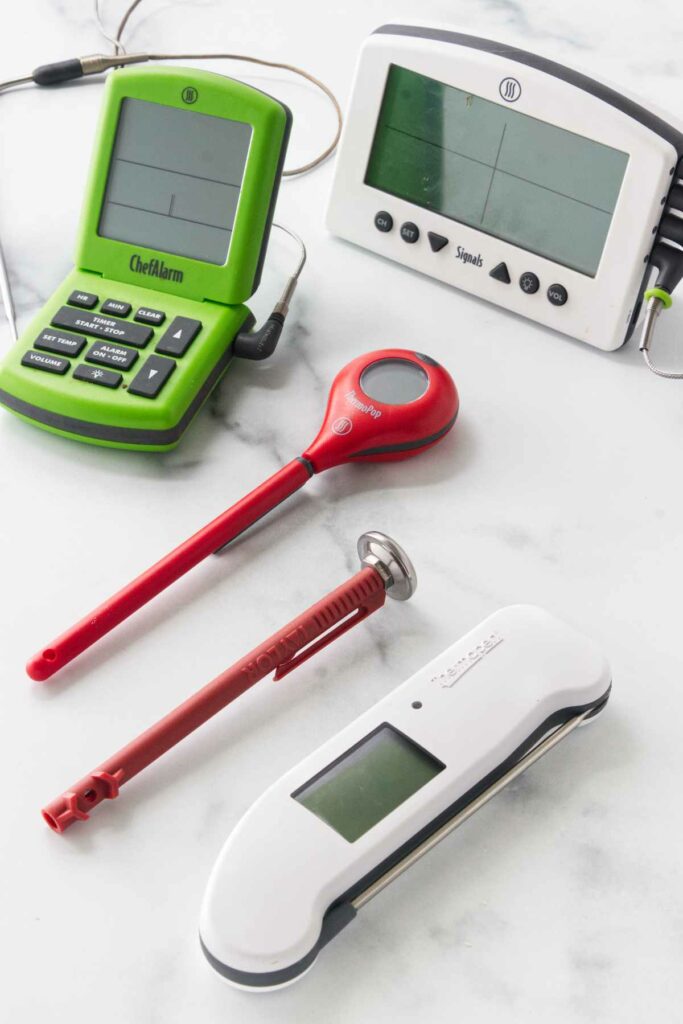
Why Use a Meat Thermometer
A thermometer gives you an accurate internal temperature, which means:
- Safer food: especially for poultry and ground meat
- Better texture: no more dry chicken or tough pork
- Consistent results: cook with confidence, not guesswork
Types of Meat Thermometers
Instant-Read Thermometers: These give you a quick temperature reading (usually in a few seconds). They’re perfect for steaks, burgers, or anything that cooks quickly.
Leave-In Probe Thermometers: These stay in the meat while it cooks and display the temperature on a screen outside your oven or grill. Great for roasts and long cooks.
Wireless Thermometers: These connect to your phone and let you track the temperature remotely. Ideal for grilling or smoking, but usually more expensive.
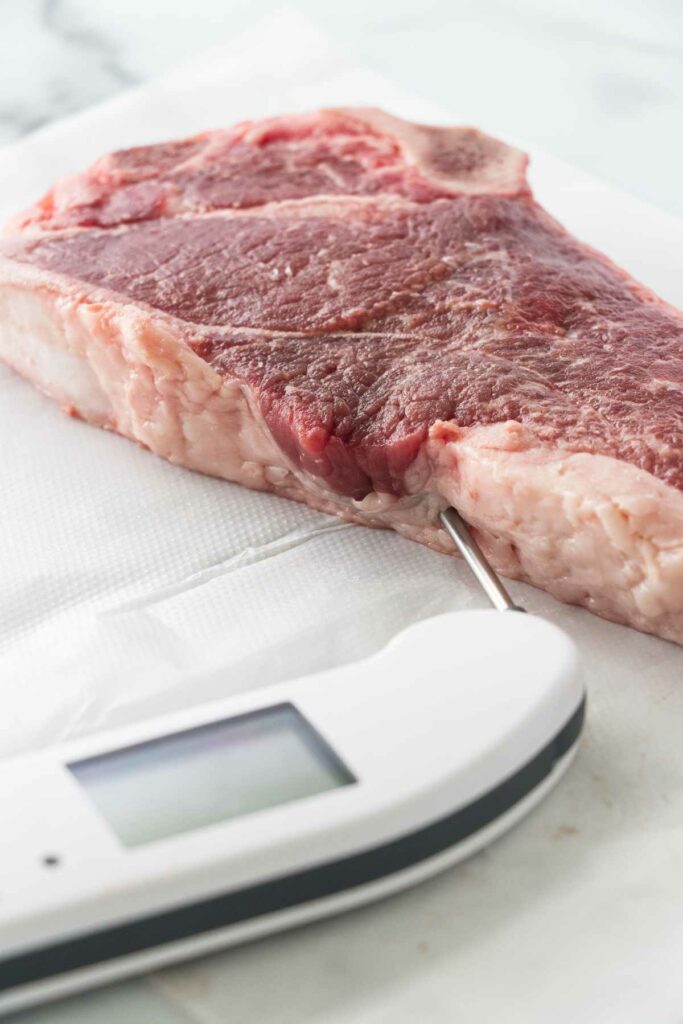
How to Use a Meat Thermometer
1. Know Your Target Temp
Every type of meat has a recommended safe internal temperature. A few basics:
- Chicken and turkey: 165°F
- Pork: 145°F (with a 3-minute rest)
- Beef roast, medium: 135°F (plus rest)
- Ground meats: 160°F
- Tough cuts: (pork shoulder, brisket, chuck roast): 190–205°F for shreddable texture
While the USDA considers pork and beef safe at 145°F, that’s not enough for tougher cuts. For meats like smoked pork shoulder, brisket, beef short ribs, or my Puerto Rican Pernil , you’ll need to keep cooking until the connective tissue breaks down. That typically happens somewhere between 190°F and 205°F.
Want to prep tougher cuts before they even hit the pan or smoker? Here is how to use meat tenderizer to break down the fibers and make them easier to cook evenly.
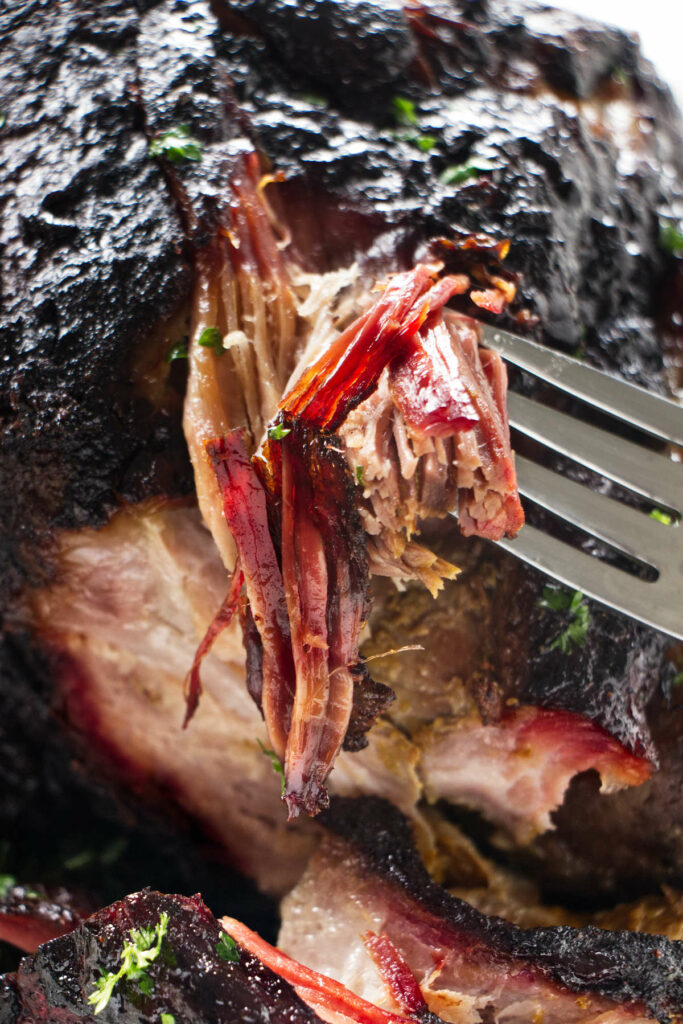
2. Insert the Thermometer Correctly
- Roasts: Place it into the thickest part of the meat, avoiding bone or fat.
- Whole poultry: Insert into the inner thigh or thickest part of the breast.
- Thin cuts (like chops or burgers): Go in from the side, aiming for the center.
Avoid touching bone, it can give a false high reading.
3. Check and Rest
Wait for the temperature to stabilize. If it hasn’t hit the right number, keep cooking and recheck.
Once it’s ready, remove the meat from the heat and let it rest before slicing.
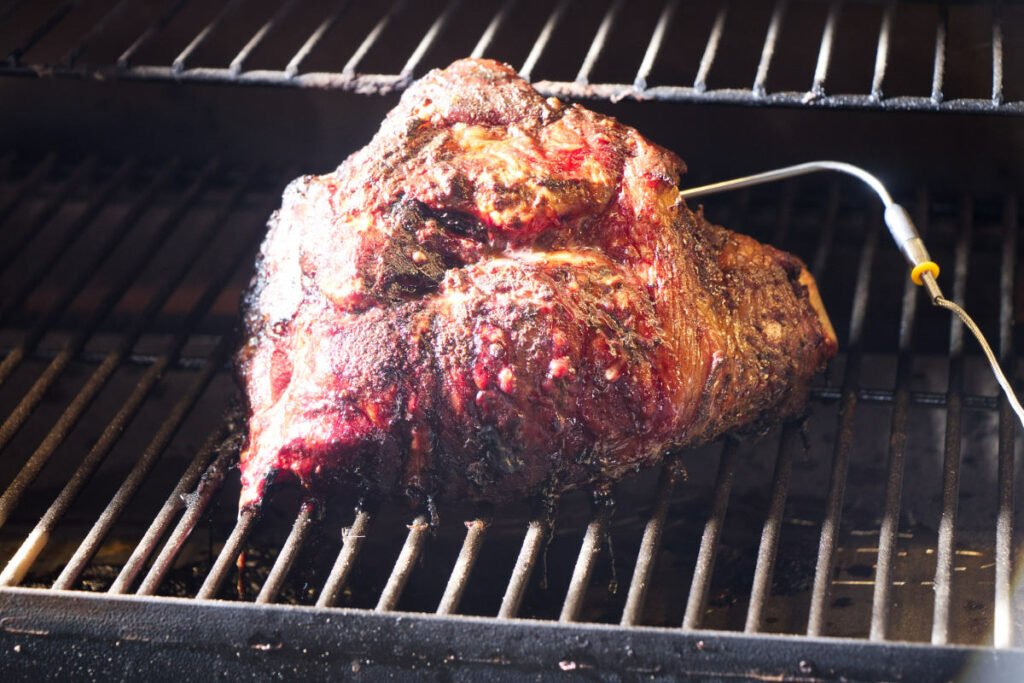
4. Clean It
Wash the probe with hot, soapy water after each use. Don’t submerge the electronic parts if it’s not waterproof.
Bonus Tip: It’s Not Just for Meat
You can also use your thermometer to:
- Check doneness in baked goods like bread (190–200°F inside)
- Monitor custards or casseroles (160°F)
Make candy (just make sure your thermometer is rated for high heat)


